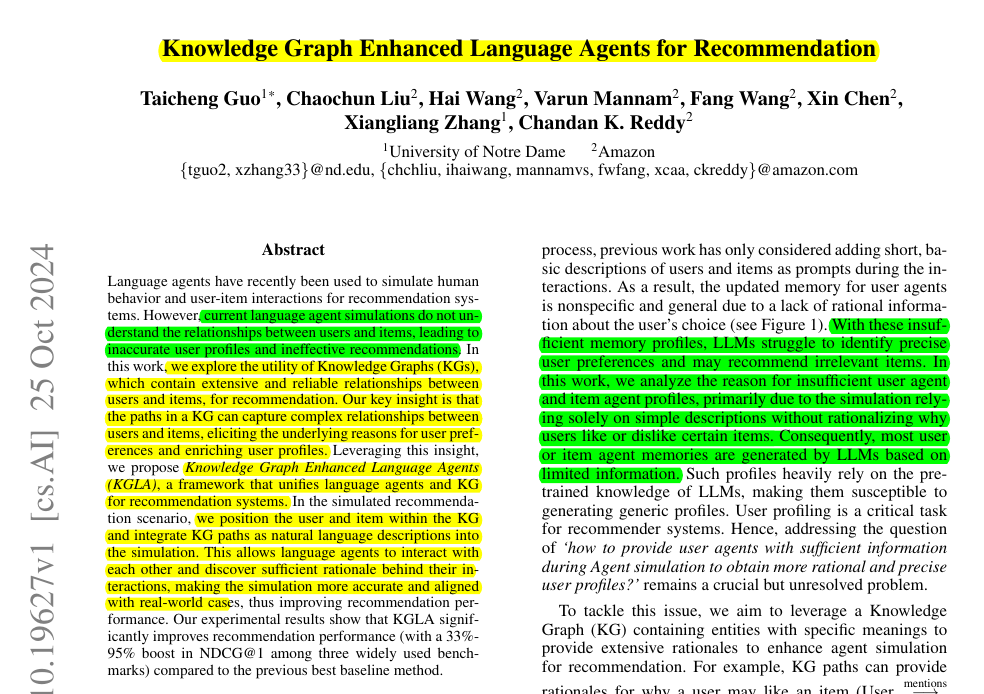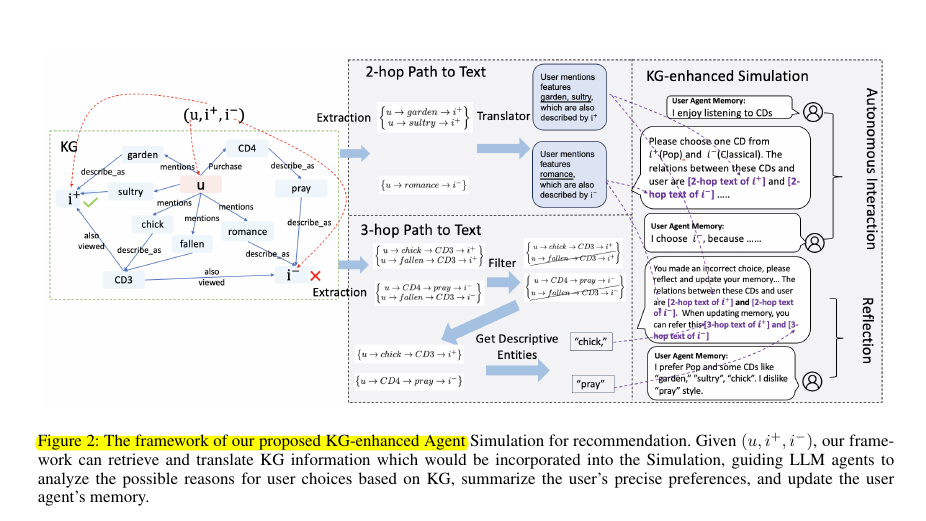Knowledge Graph Enhanced Language Agents for Recommendation
Knowledge Graphs help LLM agents learn user preferences by understanding complex relationships between users and items.
Knowledge Graphs help LLM agents learn user preferences by understanding complex relationships between users and items.
Making AI recommendations smarter by understanding why you like stuff
🎯 Original Problem:
Current language agent simulations for recommendation systems lack understanding of relationships between users and items, leading to inaccurate user profiles and ineffective recommendations.
🔍 Solution in this Paper:
• Knowledge Graph Enhanced Language Agents (KGLA) framework with three key modules:
Path Extraction: Gets relevant 2-hop and 3-hop paths between users and items from KG
Path Translation: Converts KG paths into natural language descriptions
Path Incorporation: Integrates translated paths into agent interactions and memory updates
• Framework positions user and item within Knowledge Graph and integrates paths as natural language descriptions into simulation
• Uses both 2-hop and 3-hop path information to provide rationale behind user-item interactions
💡 Key Insights:
• KG paths capture complex relationships between users and items
• Path translation reduces word count by 61-63% for 2-hop paths and 95-98% for 3-hop paths
• Combining KG with language agents enables better understanding of user preferences
• Framework provides better explanations of recommendation process
📊 Results:
• 33%-95% boost in NDCG@1 across three benchmarks
• Significant reduction in word count:
61-63% for 2-hop paths
95-98% for 3-hop paths vs original descriptions
• Outperforms previous best baseline by:
95.34% on CDs dataset
33.24% on Clothing dataset
40.79% on Beauty dataset
🔍 The way KGLA framework works
The framework unifies language agents with Knowledge Graphs through three key modules:
Path Extraction: Extracts relevant 2-hop and 3-hop paths between users and items from KG
Path Translation: Converts KG paths into natural language descriptions
Path Incorporation: Integrates the translated paths into agent interactions and memory updates during simulation and ranking.





